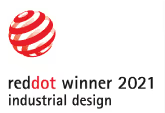Introduction to Brand
We’ve heard that branding is important, but do we know exactly why? How does good branding affect our companies and organizations, and how does bad branding erode relationships with our stakeholders? During a recent recorded webinar session, Trig team members Connie Tran and Ty Hagler gave an introductory overview of branding and how it can be effectively guided. If you’re not sure how branding can help you, what a brand is, or how you can get started in building your brand, this webinar is designed to help answer some fundamental questions.
What is a Brand and Why Does it Matter?
“Pretty visuals do NOT make a brand” asserted Tran during the event. “A brand is actually completely intangible: it is other people’s perception of how you do business. In other words, a brand can’t be dictated, it can only be guided.”
When branding is done right, we aren’t simply making transactions, but building relationships. Having a brand that is guided well serves to position a company or organization with a competitive edge that truly speaks to a customer’s identity. It also bolsters your company culture, builds up a loyal customer base, and can help you enjoy a competitive monopoly, contributing to your bottom line.
What are the Primary Functions of a Brand?
A well-guided brand helps people choose through differentiation and feel confident in their choice, it helps people remember companies and form emotional connections with those companies.
According to Scott Davis who wrote Brand Asset Management, we’re exposed to more than six-thousand ads each day and to more than twenty-five thousand new products each year. Brands help us cut through the clutter and allow us to make selections based on brand attributes and identity.
A good brand will also give you assurances that what you have selected is of high quality and that you’ve made the right decision in your selection of a certain product or service.
Brands will also use distinct visuals, copy, language and tone in a consistent way throughout all their brand assets. This enables them to differentiate themselves from their competitors and create memorable associations and touchpoints with their target customer. So whether you see an old McDonald’s, a new McDonald’s, a McDonald’s in the airport, or one of its signs off the highway, you know those golden arches and iconic yellow and red mean McDonald’s. In some recent cases, McDonald’s has even gotten away with just using a single golden arch to depict its brand.
Finally, well-guided brands will form the ultimate emotional connection with their customers. People will buy a certain brand because they believe that brand serves as an extension of their own identity; therefore, purchasing from that brand reinforces and reflects that identity back to themselves.
How do you Effectively Guide a Brand?
The most effective way we’ve found to guide a brand is to use a brand archetype. A term originally coined by Swiss psychologist Carl Jung, archetypes are characters with distinct motivators that are universally understood and timeless across all cultures for as long as humans have been telling stories. There are 12 distinct archetypes that we use for branding purposes, and each one has their own unique motivator and attribute of passion. Using an archetype to guide your brand-building process will ensure that you keep your brand personality consistent across all brand touchpoints with stakeholders. As customers, we gravitate towards these familiar characters, and as brand-owners, we seek to ensure that customers will immediately understand who we are and what we’re about.
Which Brand Archetype is Right for You?
To determine which archetype is right for your company or organization, one should first perform a Competitive Brand Analysis to ascertain the branding environment in which your new brand will live. Then, reverse-engineer the brand identities of your competitors in order to plot them on the brand archetype wheel to see where there are archetypal vacancies in which your brand could own in terms of visual and tonal positioning.
Answer brand identity questions, such as what is your purpose, your vision, mission, values? This will help you to arrive at an archetype positioning that is true to the core of your company or organization.
If you are still having trouble with selecting between a few different archetypes, you can also consider which voice comes most naturally to you, consider how your target audience wants to be spoken to, and test the archetypes’ voices in answering the brand identity questions, choosing the answer set you like best.
How can you Leverage and Apply your Brand Archetype?
After you have selected your brand archetype, you can use the archetype’s fundamental personality to influence the design of your assets and to influence the tone and language of your brand. This will keep all brand touchpoints that stakeholders have with your company or organization consistent.



